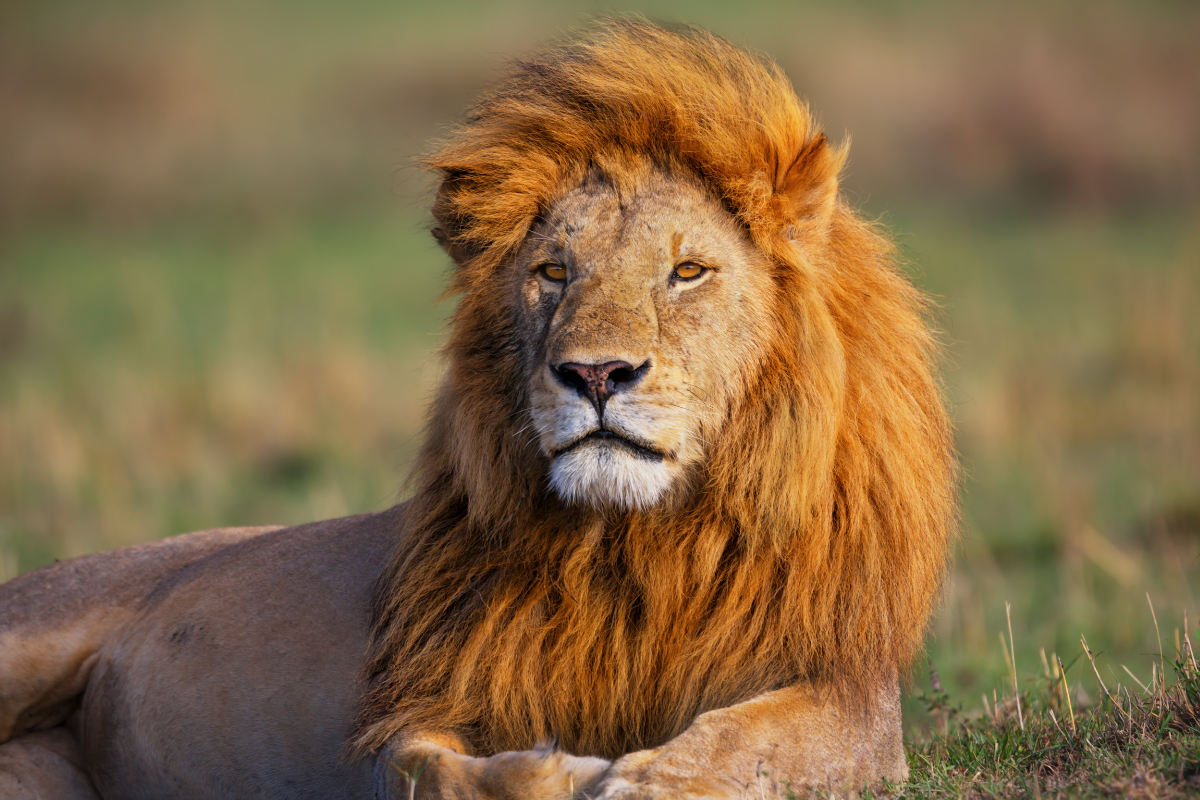
Photo courtesy of Canva
It’s rare, but there is evidence of some animals behaving altruistically in nature.
As the duckling in Dr. Seuss’ “Are You My Mother?” knows all too well, cross-species animal adoption is rare. It has occurred, though, in limited animal groups spanning mostly mammals and birds. Such occurrences have captured the interest of researchers and philosophers alike, who wonder: Can animals behave altruistically?
The idea is controversial. After all, traditional evolutionary concepts, rooted in the “selfish gene theory,” underscore individuals’ domineering self-preservation and reproduction instincts. Adopting another animal from a different species seemingly offers no direct benefit to the adopter’s genetic lineage. What’s more, some instances of interspecies adoption involve animals with typically adversarial relationships (such as an eagle adopting a hawk) or even predatory relationships (like a lioness habitually known for adopting antelopes.)
Read More: The world’s only black cat rescue and magic supply shop is in NC. Click here to read.
Some cynics may think along the lines British evolutionary biologist William Donald Hamilton has tread. He proposed that the perceived “altruistic” behavior of adopting an animal is merely a form of cover-seeking to hide from potential predators. However, this does not necessarily explain why a penguin would put itself at greater risk of harm to protect a skua chick.
Excitingly, with repeated observances and documentation, trends may one day emerge among similar documented instances that could reveal bigger-picture, more generalizable insights about animals and even ourselves. For example, among incidences involving mammals, the “outsider” has only ever been brought into the new group by a lactating mother—perhaps linking certain hormonal balances with a propensity for social inclusion.
Consulting research studies, documented observations, and news articles, Stacker compiled 12 instances of animals in the wild adopting other animals of different species. The list includes the parenting animals alongside their unusual adoptees.
Beluga whale and narwhal
One day in 2016, during a drone observation of a pod of young belugas, researchers at Quebec, Canada’s Group for Research and Education on Marine Mammals were surprised to spot a long horn in the mix—belonging to a narwhal.
Though both species are of the same cetacean family Monodontidae and inhabit the Arctic, such interactions in the wild are rare, owing to differences in migration and hunting patterns.
The narwhal has reportedly been observed engaging in social and sexual behavior with its beluga friends, leading researchers to question whether the pod may one day produce a “narluga“—a hybrid of the two, which has been confirmed to exist through research and fossil records but not yet seen alive.
Researchers speculate that the narwhal may have joined his pale cousins for “safety in numbers,” as having a larger pod serves as a mutual benefit to the belugas; or, the union may be a consequence of climate change reshaping migratory patterns, causing more interaction between species.
Bottlenose dolphin and melon-headed whale
In 2014, scientists at the Rangiroa atoll in French Polynesia, led by Pamela Carzon of the Groupe d’Étude des Mammifères Marins de Polynésie, noticed a bottlenose dolphin with two calves—one of which looked a little different. Upon closer inspection, they identified the younger calf as an orphaned melon-headed whale; the other was presumed to be its biological offspring.
Breeding female dolphins are known to adopt others’ calves to practice mothering skills; however, the practice is typically confined to their own species. In this case, researchers attributed the unique pairing to the dolphin’s particular personality and the whale’s insistence on making her his new mom.
The whale stayed with his dolphin mom for at least three years, the natural time frame for him to wean. He even assimilated into the broader dolphin community, socializing with them and adopting their behaviors.
Capuchin monkey and marmoset
An adorable sighting occurred in 2004 at the Ibura National Forest reserve in Brazil when researchers spotted a capuchin monkey with a marmoset on her back.
Later observations showed that the capuchin was nurturing and feeding the marmoset, an unusual observance considering the capuchin monkey’s diet includes smaller monkeys—and marmosets are one of the smallest primate species in the world.
Interestingly, the marmoset was accepted into the group—but treated a bit differently than the others. In an interview with “Real Wild,” professor Patrícia Izar, who witnessed the event, explained that “the dominant male was sometimes treating her more or less like we treat our pets.”
Lion and leopard
At Gir National Park in Gujarat, India, in December 2018, forest rangers were shocked when they spotted a lioness nurturing a leopard cub alongside her two biological cubs. The leopard’s adopted siblings accepted him as one of their own and were observed playing with him. The union was especially surprising considering lions and leopards constantly compete for resources.
Researchers suggested the incident arose from the mother’s instincts; the resemblance between her cubs and the leopard; or the behavioral patterns of Asiatic lionesses, who separate from their pride after giving birth to raise their offspring. It is possible that had other adult lions interacted with the cub, it may have been identified and kicked out of the pack.
Sadly, after 45 days with his adoptive family, the leopard cub passed away from a femoral hernia.
Sperm whale and bottlenose dolphin
Around 2011, a male bottlenose dolphin born with scoliosis and a curved spine was presumably kicked out of its own pod for its inability to keep up with its peers or low social status. Normally, such a creature would be left to fend for itself, but luckily for the dolphin, a group of sperm whales off the island of Pico in the Azores welcomed him into their pod.
Observations made by behavioral ecologists Alexander Wilson and Jens Krause of the Leibniz-Institute of Freshwater Ecology and Inland Fisheries in Germany revealed that the dolphin mingled with the pod for at least eight days, socializing with them and occasionally receiving affection in return.
This marked the first recorded instance of sperm whales engaging in a nonadversarial, cross-species encounter. The researchers postulated the dolphin gravitated toward the sperm whales as it may have found them easier to keep pace with than other dolphins.
3-fingered sloth and 2-fingered sloth
In 2020, ecotourism guides Gerald Pereira and Oscar Solano Rojas came across a three-fingered mother sloth nurturing a two-fingered baby sloth at a Costa Rican wildlife refuge. While this may not seem a particularly mismatched pairing at first glance, the two species belong to two different families and are separated by more than 30 million years of evolution.
Sloth Conservation Foundation Founder Dr. Rebecca Cliffe thinks the union emerged after the mother sloth lost her own baby and the two-fingered baby sloth lost its mother, among other possible scenarios.
Sadly, it is unknown if the pair would have remained bonded as the pair fell from a tree, and the mother did not survive. However, the uninjured baby had reached the natural weaning age at that point and is expected to continue thriving.
King penguin and skua
In December 2007, at Goodhope Bay on sub-Antarctic Marion Island, a king penguin was observed tending to a recently hatched skua chick—even shielding it from its own parents. The skua’s biological parents repeatedly attempted to intervene, but the penguin fiercely defended the chick and kept it concealed.
The chick reunited with his skua parents shortly after his temporary adoption when an observer interfered and rejoined them, so it is unknown how much further the pair’s bonding would have progressed.
Researchers suggest the incident may have occurred due to the penguin’s mistaken identification of the skua, as skuas are known predators of king penguin chicks.
Jackdaw and pigeon
An even more unexpected bird-bonding effort was witnessed in 2000 by zoology professor Tomasz Hetmański. As nest predators, jackdaws typically consider pigeon hatchlings food—but this one was attempting to feed a pigeon fledgling instead.
The jackdaw was observed repeatedly offering the fledgling bits of food over a three-hour period; though the pigeon rejected the food, he did not demonstrate fear, suggesting he was used to the behavior.
Hetmański believes the jackdaw may have lost its partner or hatchlings, resulting in its instinct to provide paternal care, however misdirected.
Bald eagle and red-tailed hawk
In June 2023, birdwatchers in San Francisco were captivated by a Disney-esque situation unfolding right in their community: a pair of bald eagles attempting to parent a baby red-tailed hawk they nicknamed Tuffy.
Experts believe the eagles initially took the hawk from its nest to eat but were overridden by paternal instinct and adopted her instead.
Unfortunately, after weeks of treating the hawk as one of her own, the female eagle reverted to her predatory instincts and attacked the hawk fledgling multiple times. The hawk was found dead a few days later.
Experts suggested the hawk’s learning to fly may have prompted the female eagle’s recognition of him as a rival, leading to the fatal attacks.
Common loon and goldeneye duckling
In June 2016 Canadian photographer Doug Giles was taking photos of some common loons, a diving waterbird, at Paul Lake Provincial Park, British Columbia. He noticed one tending to a fledgling that did not look like a loon and sent the pictures to The Loon Project, where founder and lead scientist Walter Piper identified the fledgling as a goldeneye duckling.
The union was particularly surprising given that goldeneye ducklings and common loons are territorial rivals and often at odds with each other. Piper suggested the loon’s hormonal drive to care for the young may have contributed to the pairing.
Eastern towhee, wood thrush, and brown-headed cowbird
While conducting a 2006 University of Delaware study about wood thrush breeding, researchers Kelly M. Schaeffer, William P. Brown, and W. Gregory Shriver were surprised to see a lone male eastern towhee caretaking for two other bird species’ nestlings. The towhee, a type of sparrow, was observed feeding a nest with three wood thrush nestlings and one brown-headed cowbird nestling.
The eastern towhee attended to the nest for at least five days, including feeding its inhabitants, defending, and maintaining the nest. The researchers believe the nestlings’ cries for food instinctually compelled the towhee.
Lion and oryx
The lion makes a second appearance on our list, but not without good reason. In perhaps one of the most surprising instances of interspecies adoption, a lioness at the Samburu National Reserve in Kenya adopted an oryx—at least five times.
The lioness, named Kamuniak, would scare the biological parents away from newborn oryxes and then assume the maternal role. She would even protect the oryx from other predators and escort them around the wildlife park.
Until they were taken by other predators, retrieved by rangers, or reclaimed by their biological mothers, Kamuniak was a doting mother to each oryx she adopted—except for when she ended up eating one.
Story editing by Carren Jao. Copy editing by Paris Close. Photo selection by Clarese Moller.
Politics

Op-ed: Michele Morrow poses a huge threat to NC public schools
Students with disabilities would particularly suffer if Michele Morrow were to become the state Superintendent of Public Instruction, Susan Book...

Biden makes 4 million more workers eligible for overtime pay
The Biden administration announced a new rule Tuesday to expand overtime pay for around 4 million lower-paid salaried employees nationwide. The...
Local News

VIDEO: It’s Time America Caught Up with the Rest of The World on Paid Leave
View this post on Instagram A post shared by Cardinal & Pine (@cardinalandpine) “In the United States of America, no one—no...

VIDEO: Senate Republicans Block Bill to Extend Child Tax Credit
View this post on Instagram A post shared by Cardinal & Pine (@cardinalandpine) Monday was tax day, and Senate Republicans are...




